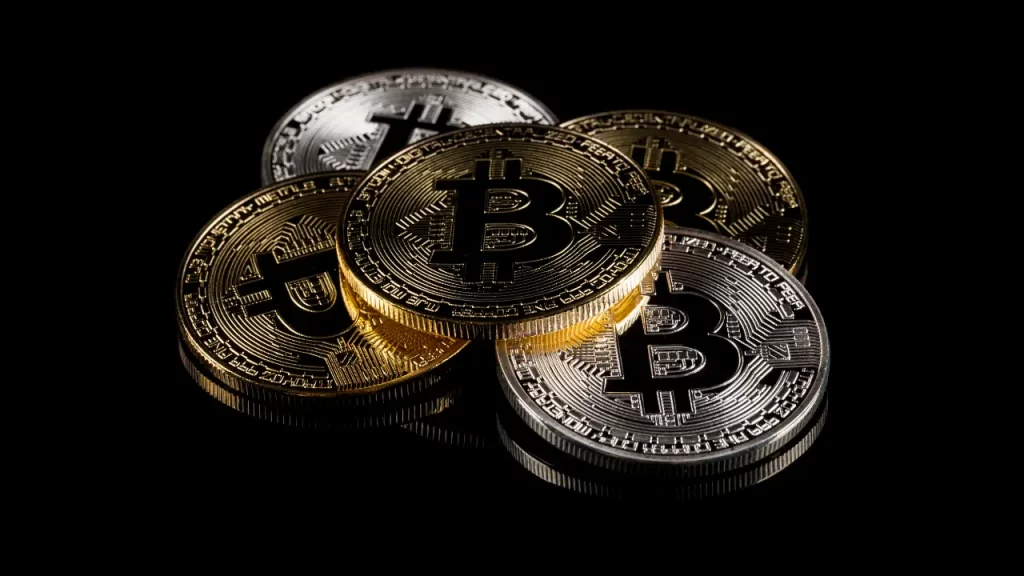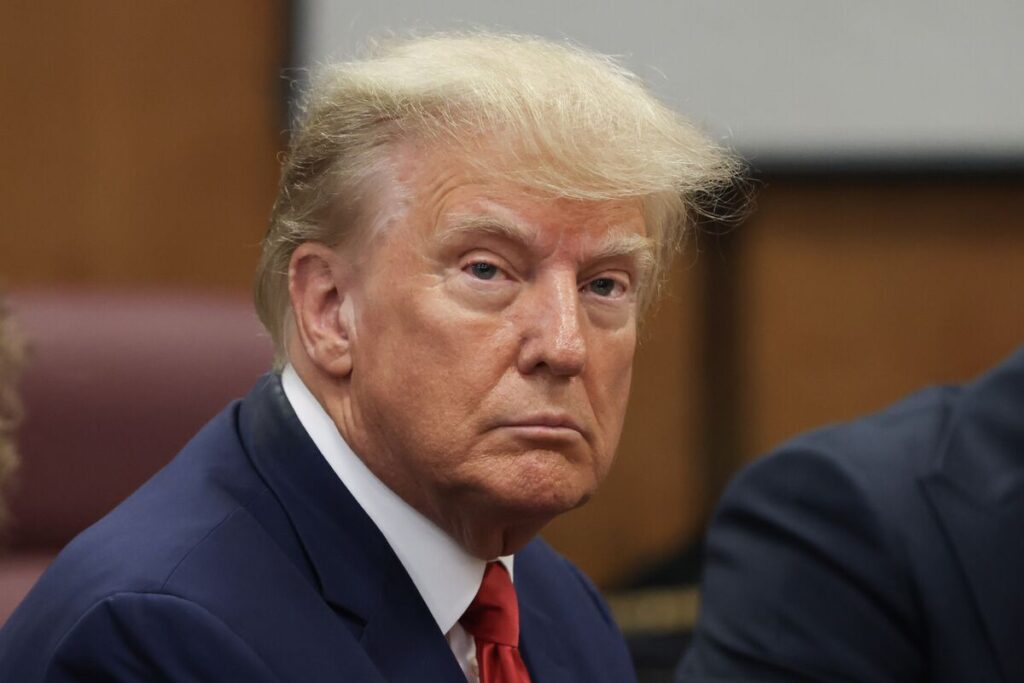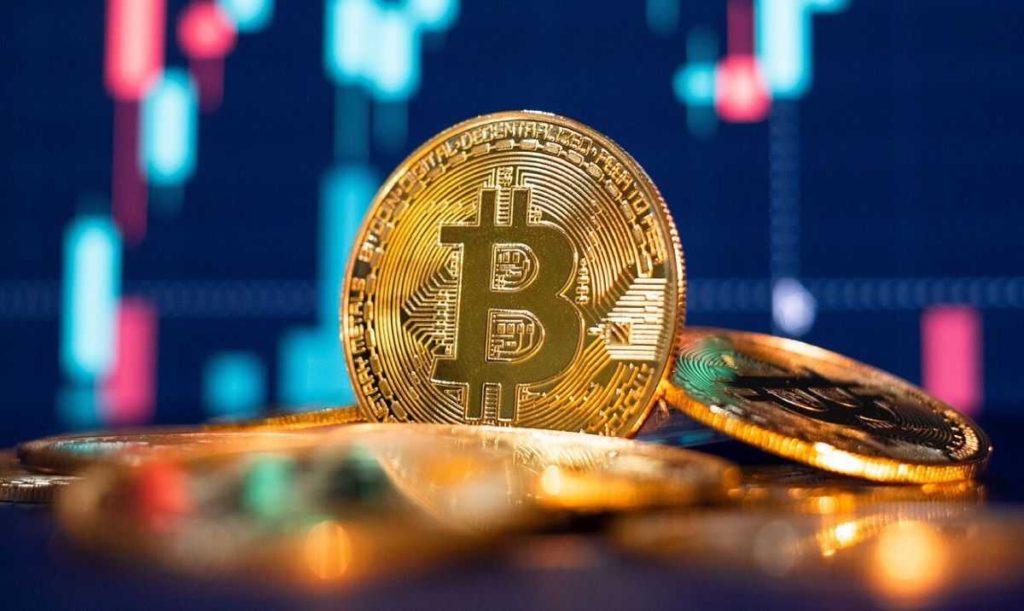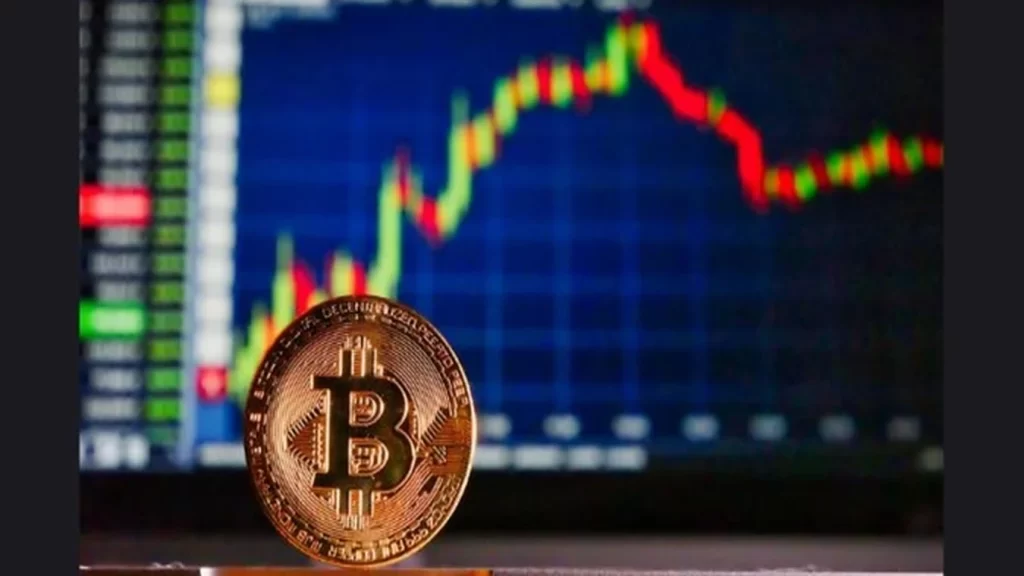The Dutch government is taking a significant step towards bolstering its presence in the world of artificial intelligence (AI).
On January 18th, the Ministry of the Interior and Kingdom Relations announced that they would allocate a substantial budget of 204.5 million euros ($222.07 million) to promote local investments in AI.
This initiative aims to prevent the Netherlands from falling behind in the global AI race, with Asia and the United States already leading in the responsible use of generative AI technologies.
One of the primary goals outlined in the announcement is to position the Netherlands and the European Union as competitive players in the development of AI technology.
The government recognizes the need to stay ahead of the curve and not remain passive observers in the AI landscape.
To achieve this, the Dutch government intends to channel these funds into various initiatives and campaigns.
One key aspect of their strategy is to educate the public about safeguarding their data from generative AI.
This step reflects their commitment to ensuring that AI technologies are used responsibly and ethically.
Simultaneously, they are exploring the creation of a secure and functional national AI testing facility, which would be available for public use.
The Dutch government is also cognizant of the risks associated with AI, such as misinformation and potential job displacement.
READ MORE: Crypto Rating Agencies Gain Importance in Managing Risks Amid Ongoing Industry Challenges
To address these concerns, they plan to implement measures that balance the benefits of AI while mitigating its negative impacts.
Furthermore, the government has pledged to adhere to the European Union’s AI Act, a regulatory framework governing the governmental use of AI and establishing rules for market entry.
In December 2023, the European Parliament and Council reached an agreement on a risk-based model for AI regulation, which is currently in the final stages of formal enactment.
Dutch Minister for Education, Culture, and Science, Robbert Dijkgraaf, emphasized the importance of developing and retaining AI talent to create generative AI systems that align with European standards and values.
Additionally, the government is considering investments in significant scientific and technological resources, such as supercomputers.
These investments would not only benefit the Netherlands but also contribute to the EU’s competitiveness in the field of large language models (LLMs) and other generative AI technologies.
As the Dutch government propels its AI agenda forward, it aims to strike a balance between innovation, ethical considerations, and global competitiveness.
ProShares, a prominent issuer of exchange-traded funds (ETFs) in the United States, is gearing up to introduce a range of Bitcoin ETFs, offering indirect exposure to Bitcoin as the era of spot Bitcoin ETF trading takes off on domestic stock exchanges.
In a filing submitted to the U.S. Securities and Exchange Commission (SEC) on January 16, ProShares outlined its plans to launch leveraged and inverse Bitcoin ETFs.
These ETFs aim to generate daily returns based on the fluctuations in Bitcoin’s price, which are determined by the daily performance of the Bloomberg Galaxy Bitcoin Index (BGCI).
ProShares has put forth proposals for five distinct Bitcoin ETFs, including the Plus Bitcoin ETF, Ultra Bitcoin ETF, UltraShort Bitcoin ETF, Short Bitcoin ETF, and ShortPlus Bitcoin ETF.
The Plus Bitcoin ETF and Ultra Bitcoin ETF from ProShares aspire to mirror a 1.5x and 2x increase, respectively, in daily BGCI performance.
Conversely, the other three funds, namely ProShares UltraShort Bitcoin ETF, ProShares Short Bitcoin ETF, and ProShares ShortPlus Bitcoin ETF, are designed to reflect daily returns inversely correlated to the BGCI at -2x, -1x, and -1.5x, respectively.
READ MORE: Rosario Witnesses Historic First as Tenant Pays Monthly Rent in Bitcoin
It’s important to note that these funds do not engage in direct shorting of Bitcoin; instead, ProShares aims to capitalize on price declines in Bitcoin.
At the time of filing, Bitcoin was trading at approximately $43,000, following a notable downturn subsequent to the introduction of spot Bitcoin ETFs in the United States.
Market analysts, such as ARK Invest CEO Cathie Wood, had previously anticipated a short-term sell-off as some investors looked to capitalize on the positive developments.
This announcement comes shortly after the U.S. SEC’s approval of the first batch of 10 spot Bitcoin ETFs on January 10, with trading commencing on January 11. ProShares did not participate in the initial launch of spot Bitcoin ETFs.
Previously, ProShares had been primarily focused on futures-based crypto ETFs, notably introducing one of the first Bitcoin futures-linked ETFs in the U.S. back in October 2021.
Their flagship BTC futures-based product, the Bitcoin Strategy ETF (BITO), has experienced substantial growth over recent months, briefly surpassing $2 billion in assets under management (AUM) for the first time in January 2024.
In addition to BITO, ProShares currently offers a range of ETFs related to cryptocurrency, including the Ether Strategy ETF, Bitcoin & Ether Market Cap Weight Strategy ETF, and the Bitcoin & Ether Equal Weight Strategy ETF.
Manta Network, a layer-2 blockchain powered by zero-knowledge proofs, recently faced a significant distributed denial-of-service (DDoS) attack while simultaneously enjoying a successful token listing on various exchanges.
The attack occurred on January 18 but has since been successfully resolved.
Kenny Li, one of the co-founders of P0xeidon Labs, the cryptographic development team responsible for Manta Network, reported that the blockchain’s nodes endured an onslaught of over 135 million remote procedure call (RPC) requests during the attack.
He described it as a “very aggressive and timed attack.” Fortunately, Li reassured the community that the blockchain’s security remained intact, and users’ funds remained safe.
However, the attack temporarily disrupted communication between apps and the blockchain.
Despite the challenges, Li expressed gratitude for the community’s support and emphasized their commitment to the project, noting that they had dedicated three years to its development.
Simultaneously, Manta tokens were listed on several prominent exchanges, including Binance, Bithumb, and KuCoin.
The Manta token’s initial trading price stood at $2.27, reflecting a fully diluted market capitalization of $2.27 billion.
READ MORE: Bitfinex Foils $15 Billion XRP Exploit Attempt as Security Measures Prevail
In the first few hours of trading, over $686 million worth of Manta tokens changed hands.
A spokesperson for Manta Network disclosed that Manta Pacific, another component of the project, experienced a remarkable 70x increase in total value locked (TVL) during the past quarter, reaching a value of $858 million.
Furthermore, the project announced an airdrop equivalent to 5% of Manta’s total supply, valued at $114 million, for ecosystem users and supporters.
Back in July 2023, Cointelegraph reported that P0xeidon Labs successfully raised $25 million in its Series A funding round.
Additionally, the team introduced the testnet for Manta Pacific, its layer-2 infrastructure, which transitioned to the mainnet on September 12, 2023.
The testnet launch in July 2023 led to the creation of 150,000 wallets and facilitated over 3.5 million transactions.
In a parallel development, Manta Atlantic’s flagship nonfungible token private offering platform made its debut in April 2023.
Since then, it has minted over 300,000 zero-knowledge soulbound tokens in collaboration with key ecosystem partners, including Arbitrum, Galxe, Linea, and CyberConnect.
Nathaniel Chastain, the former product manager of the nonfungible token (NFT) marketplace OpenSea, has launched an appeal against his conviction for wire fraud and money laundering related to insider trading.
Chastain’s legal team submitted a filing to the United States Court of Appeals for the Second Circuit on January 16, arguing that he should be acquitted because the U.S. government failed to demonstrate that the information concerning NFTs on the OpenSea platform qualified as property.
According to his lawyers, this information lacked commercial value to the platform and did not fall under the category of “protected property.”
The appellate brief emphasized that not all confidential information could be considered property and that confidential information must possess commercial value to its owner.
It clarified that OpenSea’s primary revenue source was commissions earned from NFT transactions on its website, rather than monetizing Chastain’s ideas about which NFTs to feature.
The filing further pointed out that OpenSea benefited from Chastain’s trading activities, as the platform earned commissions when he utilized it for purchasing and selling the featured NFTs.
During his 2023 trial in the U.S. District Court for the Southern District of New York, prosecutors presented evidence to establish that Chastain had the authority to select the NFTs to be featured on the OpenSea website.
READ MORE: Launch of Bybit Web3 Swap Accelerates DeFi Revolution
He had acquired 45 NFTs before their inclusion and subsequently resold them for Ether.
In May 2023, Chastain was found guilty of wire fraud and money laundering, resulting in a three-month prison sentence and a $50,000 fine.
The judge granted him until November 2 to surrender himself to authorities. The appellate filing now requests that Chastain’s conviction be overturned or replaced with a new trial.
Chastain’s appeal centers on the crucial argument that the information he used for insider trading did not constitute protected property, challenging the foundation of his conviction.
The outcome of this appeal could have broader implications for the legal treatment of insider trading in the context of NFTs and digital assets.
Former President and current United States presidential candidate, Donald Trump, has emphatically pledged to prevent the Federal Reserve from introducing a central bank digital currency (CBDC) in the country.
This promise was made during a campaign address in Portsmouth,
New Hampshire, on January 17, where Trump reiterated his commitment to safeguarding Americans against government overreach.
In his speech, Trump declared, “Tonight I’m making another promise to protect Americans from government tyranny.
I will never allow the creation of a central bank digital currency.” His statement was met with enthusiastic applause from the audience, prompting him to acknowledge their support, saying, “I didn’t know you know so much… New Hampshire, very smart people.”
Trump then went on to elaborate on his concerns about CBDCs, emphasizing that such a currency would grant the federal government absolute control over citizens’ money, potentially allowing them to seize funds without individuals even being aware of it.
He warned that this development posed a significant threat to freedom and vowed to take action to prevent it from becoming a reality in America.
Donald Trump, who controversially contested the results of the 2020 presidential election, officially launched his 2024 presidential campaign in November 2022.
READ MORE: South Korea Explores Sanctions on Cryptocurrency Mixing Services
The 60th quadrennial U.S. presidential election is scheduled for November 5, 2024.
It’s worth noting that another presidential candidate, Florida Governor Ron DeSantis, had also pledged to oppose central bank digital currencies on his first day in office.
However, DeSantis faced a setback when he lost to Trump in the Republican party primary election in Iowa on January 15, 2024, where he consistently trailed Trump by more than 10 points in the polls.
Additionally, another contender for the Republican Party nomination, Vivek Ramaswamy, who had proposed a crypto-focused policy framework, dropped out of the race on the same day as the Iowa caucus results, securing roughly 8% of the vote.
Ramaswamy officially endorsed Trump as his preferred candidate.
Former U.S. Securities and Exchange Commission enforcer John Reed Stark added an interesting perspective to the unfolding election landscape on January 17.
He suggested that the crypto movement could play a pivotal role in the 2024 presidential election and recommended that every presidential contender appoint an internal Crypto Czar to serve as the point person and spokesperson for cryptocurrency-related matters within their campaign.
Bitcoin experienced a dip in its price on January 17, just before Wall Street opened for the day. Data from Cointelegraph Markets Pro and TradingView showed that Bitcoin’s price fell to $42,400 on Bitstamp.
Despite recent volatility, the cryptocurrency has remained within a tight range and struggled to maintain support above $43,000 due to a lack of liquidity.
The negative sentiment surrounding Bitcoin was exacerbated by Jamie Dimon, the CEO of JPMorgan Chase, who criticized the cryptocurrency at the World Economic Forum (WEF) annual gathering in Davos, Switzerland. Dimon referred to Bitcoin as a “pet rock” and dismissed its utility.
He mentioned use cases such as anti-money laundering (AML), fraud prevention, tax avoidance, and combatting sex trafficking but reiterated widely debunked criticisms.
Dimon also announced that he would refrain from discussing Bitcoin in the future, asking others to stop talking about it as well.
This decision marked a change from his previous statements where he had promised to stop mentioning Bitcoin.
When asked about his thoughts on the recent launch of Bitcoin exchange-traded funds (ETFs), Dimon expressed ambivalence about competitors embracing Bitcoin.
He referred to Larry Fink, CEO of BlackRock, whose iShares Bitcoin Trust (IBIT) ETF received over $700 million in inflows within its first three days.
Dimon acknowledged that different people have different opinions, emphasizing the diversity of perspectives in the market.
READ MORE: Vanguard’s Indirect Crypto Exposure: Owning a Significant Stake in MicroStrategy
Traders in the cryptocurrency market are cautious about Bitcoin’s short-term price performance.
Daan Crypto Trades noted that Bitcoin has become unpredictable, and he preferred to wait for clear opportunities rather than rushing into trades. He stated that the previous ease of trading had disappeared, and the current market environment was more challenging.
Crypto Tony, another trader, predicted that Bitcoin would continue to trade within a range, possibly with a floor in the upper $30,000 area.
He expected Bitcoin to fluctuate between $47,000 and $38,000 in the coming months, with more attention shifting towards alternative cryptocurrencies (Altcoins).
In summary, Bitcoin faced a price dip and struggled to maintain support above $43,000. Jamie Dimon’s critical remarks at the World Economic Forum added to the negative sentiment, and traders were cautious about the cryptocurrency’s short-term performance, with some anticipating a continuation of its range-bound trading.
VanEck, the asset management firm, has decided to shutter and liquidate its Bitcoin Strategy Exchange-Traded Fund (ETF), a move that comes less than two years after its launch.
The decision was officially announced on January 17th, with VanEck’s board of trustees granting approval for the liquidation and dissolution of the ETF, which had been listed on the Cboe BZX Exchange since November 2021.
This strategic move follows VanEck’s recent approval from the United States Securities and Exchange Commission (SEC) to list shares of its spot Bitcoin ETF.
VanEck explained that this decision was the result of a comprehensive evaluation of multiple factors, including performance, liquidity, assets under management, and investor interest.
In a statement, the firm stated, “VanEck continuously monitors and evaluates its ETF offerings across a number of factors, including performance, liquidity, assets under management, and investor interest, among others.”
Shareholders who hold positions in the Bitcoin Strategy ETF will have until January 30th to sell their shares, as the fund’s ticker symbol, XBTF, is set to be delisted on February 6th.
READ MORE: Ether Surges Over 20% Against Bitcoin in 72 Hours, Traders Bullish on Further Upside
In a post dated January 17th, VanEck hinted that the decision to discontinue the ETF linked to Bitcoin futures was influenced by the SEC’s green light for spot Bitcoin investment vehicles.
VanEck has also made strides in the cryptocurrency space by launching the VanEck Bitcoin Trust ETF, with the ticker symbol HODL.
This ETF started trading on the Cboe BZX Exchange on January 11th, and it has seen impressive success, with all recently approved spot Bitcoin ETFs collectively amassing approximately $4.5 billion in trading volume on their first day of operation.
A report from CoinShares underlined the increasing popularity of cryptocurrency products in the United States, as it revealed that inflows into U.S. crypto products for the week ending on January 12th surpassed those of Canada, Germany, and Sweden.
This data suggests that despite the discontinuation of the Bitcoin Strategy ETF, the interest and investment in cryptocurrencies remain robust and continue to shape the financial landscape.
In 2022 and 2023, a significant shift occurred in the world of cryptocurrency-related illicit activities as stablecoins eclipsed Bitcoin in terms of transaction volume.
This transformation is highlighted in the latest report by blockchain analytics firm Chainalysis, which reveals that from 2018 to 2021, Bitcoin was the “go-to cryptocurrency” for cybercriminals. However, the years 2022 and 2023 saw stablecoins taking the lead in facilitating illicit transactions.
This transition coincided with the overall surge in stablecoin activity, encompassing both lawful transactions and nefarious ones.
Nonetheless, it’s important to note that Bitcoin remains the preferred choice for certain types of illicit activities, such as darknet market sales and ransomware extortion.
Stablecoins have gained favor among cybercriminals, particularly for activities like fraudulent schemes and transactions involving sanctioned entities.
These activities represent the most substantial portion of crypto-related crimes in terms of transaction volume.
READ MORE: Crypto Rating Agencies Gain Importance in Managing Risks Amid Ongoing Industry Challenges
According to Chainalysis, sanctioned entities and jurisdictions accounted for a combined transaction volume of $14.9 billion in 2023, constituting 61.5% of all illicit transactions during that year.
Chainalysis also points out that a significant portion of this volume stems from crypto services that continue to operate in regions not subject to U.S. sanctions.
This allows them to evade the reach of the United States Department of the Treasury’s Office of Foreign Assets Control.
In another positive development, blockchain security firm CertiK reported on January 4th that crypto hack revenue had decreased by more than 51% in 2023.
This marked a notable improvement in blockchain security, as noted by CertiK’s co-founder, Ronghui Gu.
Chainalysis corroborated these findings in their report, revealing a 54.3% decrease in crypto hack revenue and a 29.2% drop in profits from crypto scams.
Consequently, there has been a decline in transaction volume associated with illicit addresses in 2023.
In summary, the landscape of crypto-related illicit activities shifted dramatically in 2022 and 2023, with stablecoins taking precedence over Bitcoin for most of the illicit transaction volume.
This change is driven by the increased popularity of stablecoins among cybercriminals, particularly for fraudulent schemes and transactions involving sanctioned entities.
Despite these shifts, efforts to enhance blockchain security have yielded positive results, leading to a decline in hack revenue and scam profits, as reported by CertiK and Chainalysis.
Since the launch of spot Bitcoin exchange-traded funds (ETFs) in the United States on January 11, these new investment vehicles have rapidly gained traction, with trading volumes soaring past $10 billion within just three days, as reported by Bloomberg Intelligence analyst James Seyffart.
This meteoric rise in trading activity has sparked debate, with some questioning whether the frenzied trading has had any substantial impact on Bitcoin’s price.
However, Eric Balchunas, another Bloomberg analyst, emphasizes the sheer magnitude of this achievement.
He points out that the $10 billion volume in the first three days dwarfs the performance of 500 ETFs launched throughout 2023, which collectively managed only $450 million in volume during the same period.
The most successful ETF from that batch achieved a mere $45 million in trading volume.
In contrast, BlackRock’s iShares Bitcoin Trust (IBIT) alone recorded more activity than the entire class of ETFs launched in 2023.
Regarding net inflows and outflows, the data shows a trend of investors moving away from the Grayscale Bitcoin Trust (GBTC), which recently transitioned into an ETF format.
Over three days, BlackRock’s IBIT accumulated an impressive $700 million in net gains.
Meanwhile, GBTC experienced net outflows of over $1.1 billion, likely due to investors switching to ETF products with lower fees.
READ MORE: Vanguard’s Indirect Crypto Exposure: Owning a Significant Stake in MicroStrategy
James Van Straten, a research and data analyst at CryptoSlate, expressed optimism about the ongoing trends:
“GBTC total outflows are now at $1.18 billion vs. spot Bitcoin ETF inflows of $2 billion. It would be extremely encouraging if we continued this pace for the first month of trading.”
CEO Samson Mow anticipates a return to ETF equilibrium in the near future, expecting Grayscale to adjust its fees and alleviate the selling pressure.
While these developments are exciting, the Bitcoin price remains within its well-established trading range since December 2023, hovering around $43,000.
Although some remain confident in the market’s strength at this level, concerns persist regarding Bitcoin’s ability to avoid another significant price decline.
Popular social media trader JT believes that there is still room for further decline, especially when considering the long-standing trading range.
The price has found support around $41,500 in January, repeatedly testing this level since the beginning of 2024, according to data from Cointelegraph Markets Pro and TradingView.
The cryptocurrency community remains watchful, hoping for stability and potential price growth as the ETF market continues to evolve.
Crypto lender Celsius has recently moved over $125 million worth of Ether to various crypto exchanges as part of its strategy to start repaying its creditors.
According to data from Arkham Intelligence, between January 8 and January 12, Celsius transferred $95.5 million to Coinbase, while $29.7 million was moved to FalconX.
Despite these transfers, Celsius still holds a substantial amount of Ethereum, with over 550,000 ETH valued at a staggering $1.36 billion as of the latest data available.
On January 5, Celsius initiated the unstaking of a massive 206,300 ETH, worth $407 million at the time.
The lender explained that this newly-liberated Ether would be used to cover costs related to its ongoing restructuring process and to prepare for the repayment of creditors.
While Celsius has expressed its intention to distribute Bitcoin and ETH to creditors in its recovery plan, it has not provided a specific timeline for when creditors can expect to receive their funds.
Celsius creditors have endured a long wait of more than 18 months to access their funds, as the platform declared bankruptcy in July 2022.
READ MORE: Vanguard’s Exclusion of Spot Bitcoin ETFs Spurs Investor Exodus to Alternative Platforms
In a similar move, FTX, a bankrupt crypto exchange, and its defunct trading arm, Alameda Research, transferred $28 million in crypto assets to exchanges on January 14, as per data from blockchain analytics platform Spot On Chain.
This transfer included $18.7 million in Wrapped Bitcoin, $8 million in Ether, and $1 million in Pendle (PENDLE) to Coinbase and Binance.
Following their bankruptcy declaration in November 2022, FTX and Alameda Research have been actively working to raise funds for creditor repayment.
Administrators of FTX have successfully reclaimed approximately $7 billion in assets, including a substantial $3.4 billion in cryptocurrency.
Market sentiment has been favorable towards FTX creditor claims, with some assets trading as high as $0.50 on the dollar as of October 2023.
While there is no precise date for when FTX customers can expect to be reimbursed, the current plan outlines that repayments are likely to commence at some point in 2024.
This suggests that creditors may have a reasonable chance of recovering their investments.












